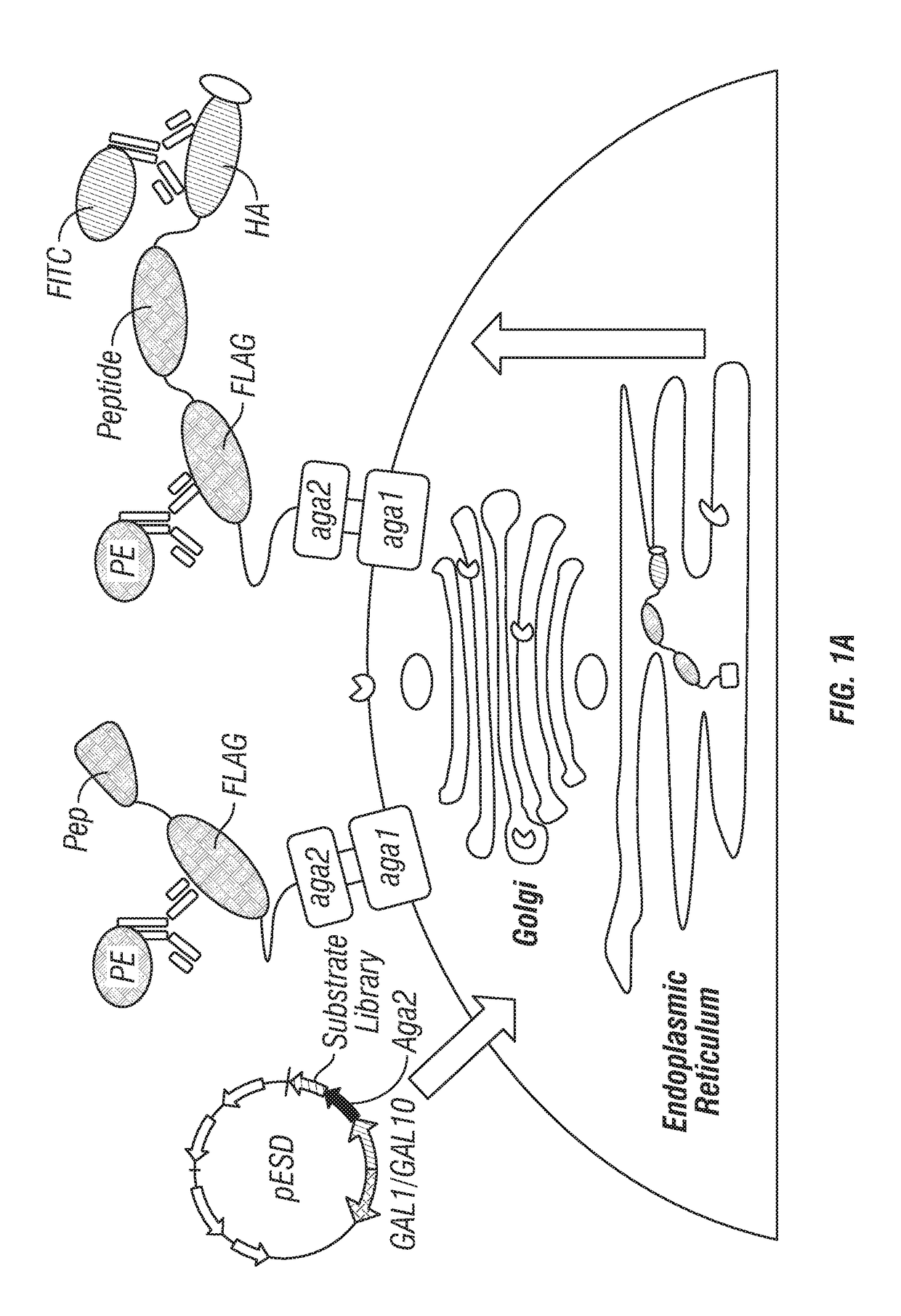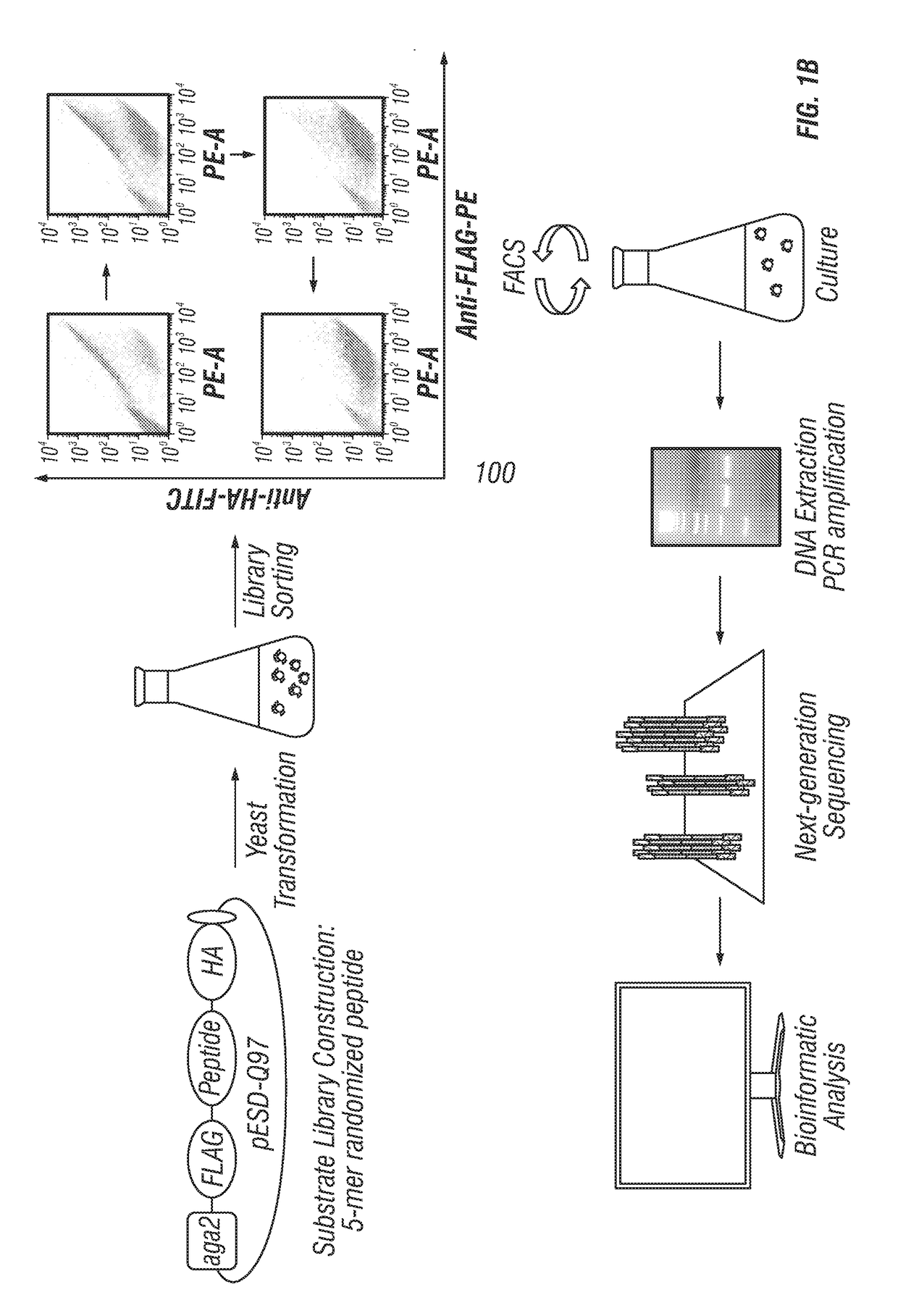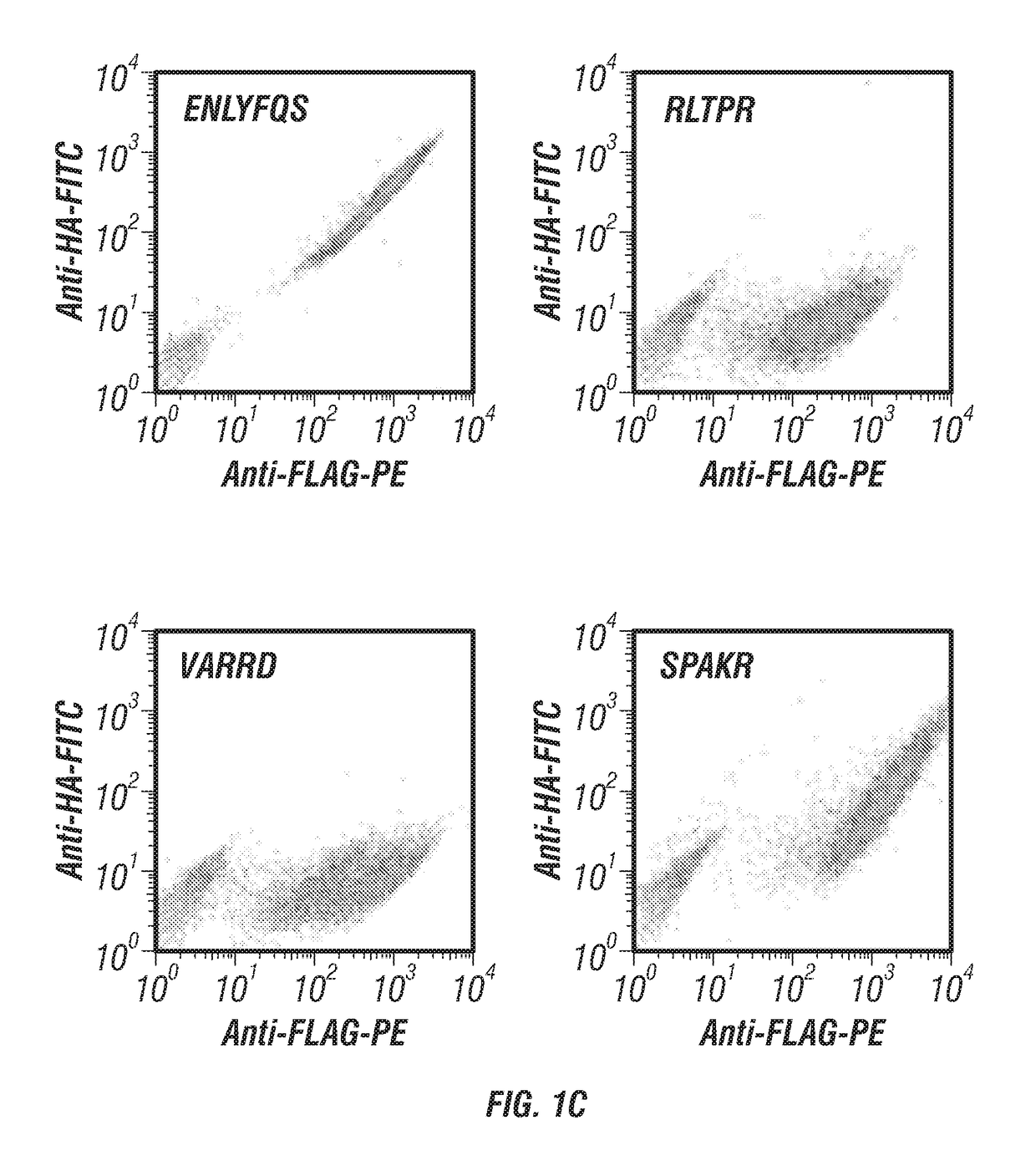Methods for generating engineered enzymes
a technology of engineered enzymes and kinases, applied in the field of molecular biology and medicine, can solve the problems of limited use of therapeutic proteases, perpetual problems, and little or no catalytic activity that would be undesirable, and achieve the effect of accurately identifying the specific sequence and preventing unwanted cleavage of proteins and peptides
- Summary
- Abstract
- Description
- Claims
- Application Information
AI Technical Summary
Benefits of technology
Problems solved by technology
Method used
Image
Examples
example 1
Materials and Methods
Plasmid Construction
[0136]The plasmid pESD-Q97 was based on the vector pESD (Li et al., 2013). The Aga2 gene downstream of the GAL10 promoter was fused to a four-part cassette encoding: (1) the FLAG tag sequence, DYKDDDDK (SEQ ID NO:9); (2) the native substrate of TEV-P, ENLYFQS (SEQ ID NO:8); (3) the HA tag sequence, YPYDVPDYA (SEQ ID NO:20); and (4) the ER retention signal sequence, FEHDEL (SEQ ID NO:4). The plasmid pESD-Q97 contained NheI and PstI restriction enzyme sites for homologous recombination. The vectors for recombinant TEV protease substrate profiling (pESD-Q105 and pESD-Q106) were generated by cloning of wild-type TEV-P sequence with the ER retention signal sequence or the engineered TEV-PE10 variant sequence with the ER retention signal sequence into the pESD-Q97 vector downstream of the GAL1 promoter.
Substrate Library Construction
[0137]For the construction of the five-amino acid randomized substrate library, PAGE-purified primers (Primer 1 and Pr...
example 2
Profiling Protease Specificity: Combining Yeast ER Sequestration Screening (YESS) with Next Generation Sequencing
System Validation
[0141]Negative and positive controls were run to validate the YESS-NGS approach (FIGS. 1A-C). For a negative control, a YESS substrate fusion construct was created without an exogenous protease but with a substrate sequence not expected to have an endogenous yeast cleavage site (the TEV-P cleavage sequence ENLYFQS (SEQ ID NO:8)). Antibody labeling following incubation yielded cells with equally high PE and FITC signals as expected for a substrate that is not cleaved (FIG. 1C). As a positive control for cleavage, a YESS substrate fusion construct was created incorporating a known Kex2 cleavage sequence, VARRD (SEQ ID NO:14; Bostian et al. 1984). As expected, yeast cells containing the VARRD (SEQ ID NO: 14) cleavage sequence displayed relatively high PE fluorescence and low FITC fluorescence in the FACS fluorescence scatter plots, indicating od proteolysis ...
example 3
Analysis of Sequence Specificity of Sortase a from S. pyogenes Via Yeast ER Sequestration Screening
[0162]Sortases can be utilized for various biotechnological applications including the ligation of various proteins to molecular probes, nucleic acids, glycans and solid supports. For C-terminal labeling, the protein to be labeled contained the sortase sorting sequence (LPETG, SEQ ID NO:15, for S. Aureus SrtA) and the probe contained a di-glycine amino terminus for ligation. N-terminal labeling may also occur if the probe contains the sorting signal and the protein contains the poly-glycine motif. Sequence specificity can differ for various sortases across the different classes of sortases, as well as across species of gram-positive bacteria.
[0163]This example provides, in some aspects, techniques for analyzing the sequence specificity of various sortases utilizing the yeast ER sequestration screening technique, employing SrtA from S. pyogenes as a proof of principal. This class of sor...
PUM
| Property | Measurement | Unit |
|---|---|---|
| concentration | aaaaa | aaaaa |
| pH | aaaaa | aaaaa |
| pH | aaaaa | aaaaa |
Abstract
Description
Claims
Application Information
 Login to View More
Login to View More - R&D
- Intellectual Property
- Life Sciences
- Materials
- Tech Scout
- Unparalleled Data Quality
- Higher Quality Content
- 60% Fewer Hallucinations
Browse by: Latest US Patents, China's latest patents, Technical Efficacy Thesaurus, Application Domain, Technology Topic, Popular Technical Reports.
© 2025 PatSnap. All rights reserved.Legal|Privacy policy|Modern Slavery Act Transparency Statement|Sitemap|About US| Contact US: help@patsnap.com



